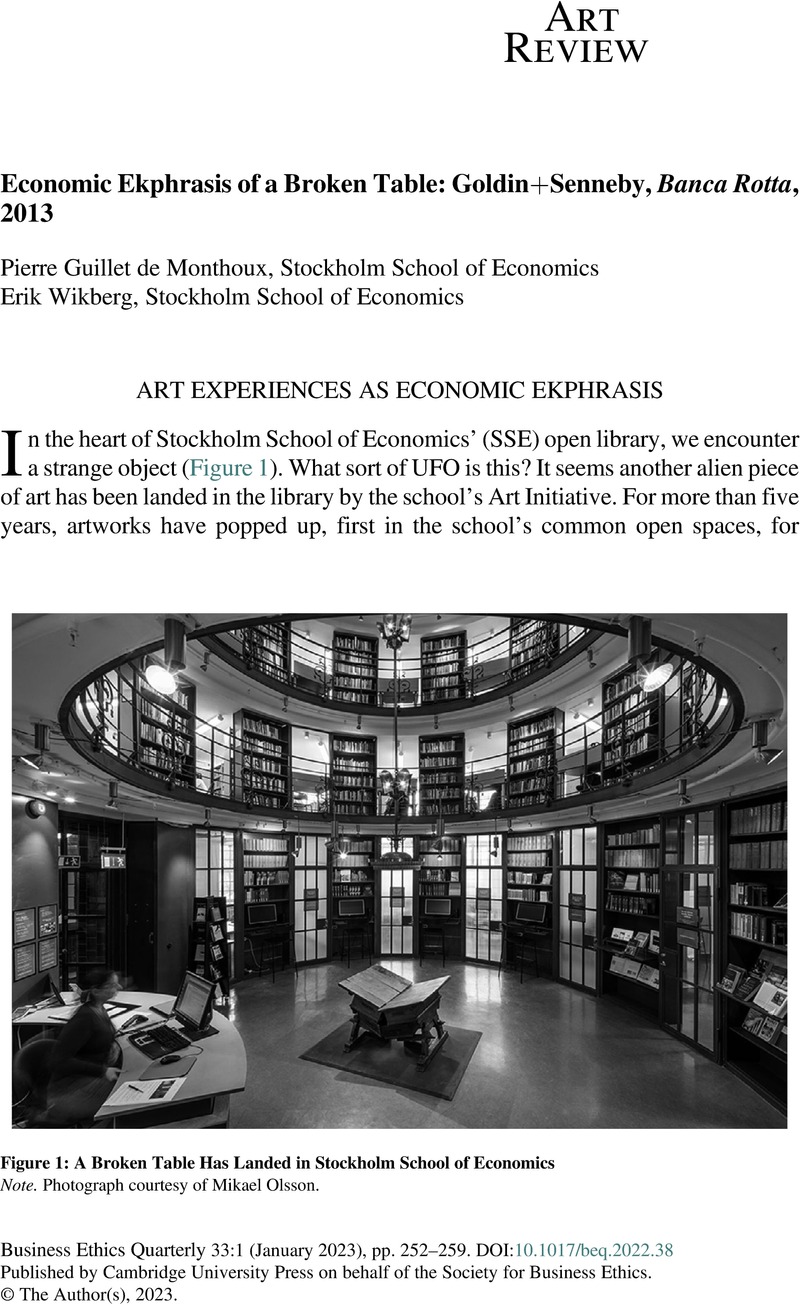No CrossRef data available.
Article contents
Economic Ekphrasis of a Broken Table: Goldin+Senneby, Banca Rotta, 2013
Review products
Economic Ekphrasis of a Broken Table: Goldin+Senneby, Banca Rotta, 2013
Published online by Cambridge University Press: 01 February 2023
Abstract
An abstract is not available for this content so a preview has been provided. Please use the Get access link above for information on how to access this content.

- Type
- Art Review
- Information
- Copyright
- © The Author(s), 2023. Published by Cambridge University Press on behalf of the Society for Business Ethics
References
REFERENCES
Birchall, Clare. 2021. “The Economy of Secrets and the Secrets of the Economy.” In Economic Ekphrasis: Goldin+Senneby and Art for Business Education, edited by Guillet de Monthoux, Pierre and Wikberg, Erik, 205–13. Berlin: Sternberg Press.Google Scholar
Fraiberger, Samuel P., Sinatra, Roberta, Resch, Magnus, Riedl, Christoph, and Barabási, Albert-Lázló. 2018. “Quantifying Reputation and Success in Art.” Science 362 (6416): 825–29.CrossRefGoogle ScholarPubMed
Goldin+Senneby. n.d.-a. “Banca Rotta.” https://goldinsenneby.com/practice/banca-rotta.Google Scholar
Guillet de Monthoux, Pierre, and Wikberg, Erik. 2021. Economic Ekphrasis: Goldin Senneby and Art for Business Education. Berlin: Sternberg Press.Google Scholar
LinkedIn. n.d. “Goldin+Senneby.” https://www.linkedin.com/company/goldin-senneby/about/.Google Scholar
Nilson, Isak, and Wikberg, Erik. 2021. Artful Objects—Graham Harman and the Business of Speculative Realism. Berlin: Sternberg Press.Google Scholar
Rorty, Richard. 1994. “Do We Need Ethical Principles?” Talk at the Vancuver Insitute. YouTube video, 1:24:13. https://www.youtube.com/watch?v=SDAdveMYHFs.Google Scholar
Selander, Lina. 2022. “Soli Deo Gloria.” https://www.linaselander.com/public-commissions/soli-deo-gloria-handelshogskolan.Google Scholar
Sjöberg, Örjan. 2021. “Banca Rotta as Memento Mori—or Is There Simply No Need to Bother?” In Economic Ekphrasis: Goldin+Senneby and Art for Business Education, edited by Guillet de Monthoux, Pierre and Wikberg, Erik, 79–87. Berlin: Sternberg Press.Google Scholar
Stockholm School of Economics. n.d. “Mission and Vision.” https://www.hhs.se/en/about-us/organization/mission-and-vision/.Google Scholar


